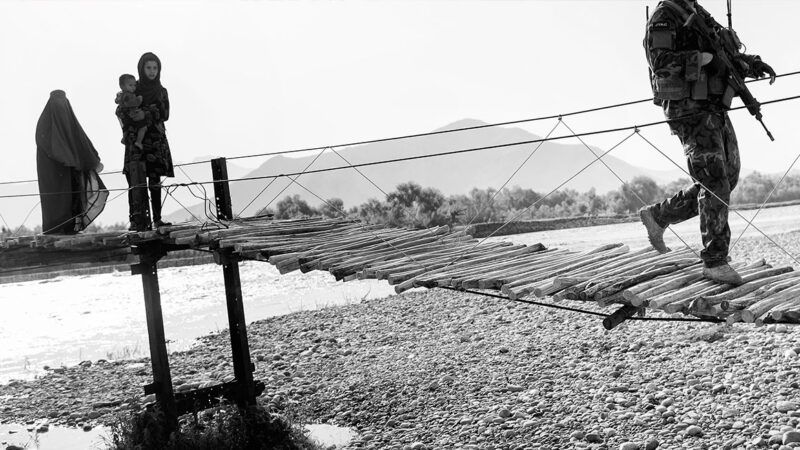Leaving Afghanistan
The U.S. did not leave behind a safe and stable situation, but it was never capable of creating one.

This summer, the U.S. government finally set an official end date for America's two-decade military misadventure in Afghanistan. After announcing a drawdown of the U.S. troop presence there in April, President Joe Biden declared at a July 8 press briefing that the U.S. "military mission in Afghanistan will conclude on August 31."
Fulfilling a campaign promise, Biden admitted what the U.S. should have admitted more than a decade ago: "The United States did what we went to do in Afghanistan," he said. The goal, he explained, was "to get the terrorists who attacked us on 9/11 and to deliver justice to Osama bin Laden and to degrade the terrorist threat to keep Afghanistan from becoming a base from which attacks could be continued against the United States." He added that "we achieved those objectives."
The mission was not, Biden said, "to nation build." Rather, "it's the right and the responsibility of the Afghan people alone to decide their future and how they want to run their country."
This will not be a full disengagement. Biden said the U.S. will continue to give the Afghan government money and weapons, including 37 Black Hawk helicopters. He added that America will still try to play some role in "determined diplomacy to pursue peace" in a nation where turmoil was the norm before and during the U.S. presence.
Biden acknowledged that the Trump administration laid the groundwork for the withdrawal by brokering a deal with the Taliban that was meant to get them to stop attacking U.S. troops, cut all ties with al Qaeda, and negotiate meaningfully with the Afghan government in exchange for U.S. departure (which was supposed to happen by May 1 under the original Trump agreement).
Critics question whether those terms have been effectively met. Still, had the new administration reneged on the deal, Biden said, "the Taliban would have again begun to target our forces." Overthrowing the militant Islamist group was a U.S. goal, and that was achieved before 2001 ended. The U.S. stayed so long afterward, however, that the wheels of endless Afghan tribal unrest have again put the Taliban in a position to take control of the country.
Biden has admitted that it was delusional to perennially insist that "one more year" of occupation would fix Afghanistan. After all, 2019 brought the highest recorded Afghan civilian death toll of the U.S. occupation.
Like the occupation itself, the pullout has not been without hiccups, embarrassments, and policy mistakes. In June, the American military contingent that operated a major airfield in Bagram left in the middle of the night and waited until U.S. troops were at the Kabul airport, an hour away, to inform the Afghan commander of their departure. After U.S. troops shut off power, looters rushed the base.
The late journalist Michael Hastings, whose reporting helped drive Gen. Stanley McChrystal from his job managing America's Afghan operations, observed in 2012 that "U.S. forces are not fighting and dying to combat terrorists, but are fighting and dying in local political disputes." Ending those disputes was never within U.S. competence, and the American training mission never created a trustworthy and competent Afghan security force. What Hastings wrote then remains true today, and Biden should stick to his committed withdrawal even if the security situation for the Afghan government worsens.
During this 20-year folly, Biden noted, sounding like an op-ed writer decrying U.S. foreign policy fecklessness, "a trillion dollars [were] spent training and equipping hundreds of thousands of Afghan National Security and Defense Forces," 2,448 Americans were killed, 20,722 more were wounded, and "untold thousands [came] home with unseen trauma to their mental health."
The U.S. record in Afghanistan does not suggest that any continued meddling would do much good. Most of our aid and reconstruction money was wasted on boondoggles or lined the pockets of corrupt officials and contractors. The U.S. never got any better at understanding the nation's internal dynamics, which were generally united by distrust and disdain for foreign occupiers.
No matter how much money the U.S. threw at it, the Afghan government could never produce any semblance of security in most of the nation. The U.S. will not be leaving behind a safe and stable situation, but it was never capable of creating one.



Show Comments (162)